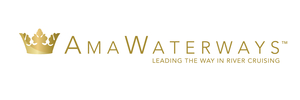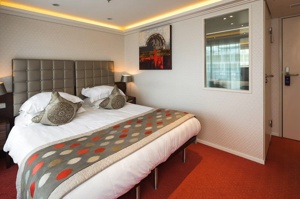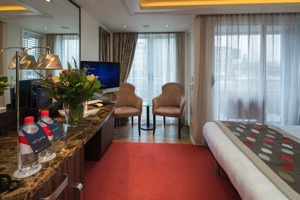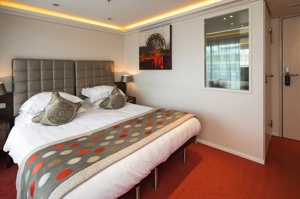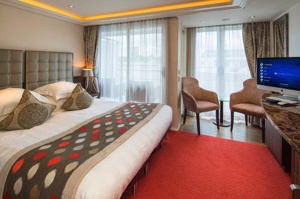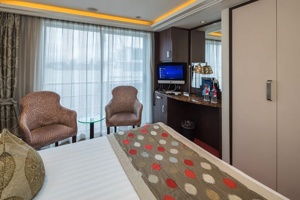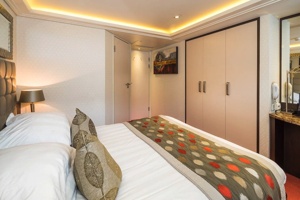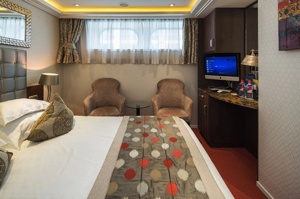Like a fallen leaf floating atop the water, AmaCerto floats effortlessly down Europe's most fascinating waterways. A harvest theme is carried throughout the ship in autumn reds and golds, from the spacious and well-appointed staterooms, with their plush bedding and soft robes, to the classically elegant Main Lounge with its baby grand piano and bar. An onboard salon puts you center stage and ready for your close-up. On the Sun Deck, a heated pool features a swim-up bar with underwater bar stools, and a walking track provides the perfect venue for a romantic sunrise or sunset stroll. And from the kitchen, you'll find fine dining to the extreme, with exquisite, regionally inspired cuisine prepared in both the Main Restaurant and at The Chef's Table specialty restaurant, where views of the rippling river are just the amuse-bouche to every mouthwatering bite.
Cruise ID: 53232
With AmaWaterways, you have the option of exploring Europe's amazing sights like the locals do. We were the first river cruise line to carry an entire fleet of complimentary bicycles on board, so you can experience biking alongside enchanting riverside pathways and in city centres. Whether you feel like joining one of our exclusive guided bike tours, or want to go discover on your own, there are many ways for you to explore on two wheels during your cruise.
EUROPE
7-Night Cruise
Ship's Crew: The entire amount will be divided equally amongst all crew members. Recommendation: 100 Euros per 7-night cruise, per guest. (AmaMagna 120 Euros per 7-night cruise, per guest)
Cruise Manager: Your Cruise Manager is not part of the ship's crew and is the AmaWaterways representative who also accompanies you on any pre- and/or post-cruise hotel/land extensions you may have booked. Recommendation: 25 Euros per 7-night, per guest; 4 Euros for each additional day, per guest for pre- and post-cruise hotel/land extensions.
10-Night Cruise
Ship's Crew: The entire amount will be divided equally amongst all crew members. Recommendation: 143 Euros per 10-night cruise, per guest.
Cruise Manager: Your Cruise Manager is not part of the ship's crew and is the AmaWaterways representative who also accompanies you on any pre- and/or post-cruise hotel/land extensions you may have booked. Recommendation: 36 Euros per 10-night, per guest; 4 Euros for each additional day, per guest for pre- and post-cruise hotel/land extensions.
11-Night Cruise
Ship's Crew: The entire amount will be divided equally amongst all crew members. Recommendation: 158 Euros per 11-night cruise, per guest.
Cruise Manager: Your Cruise Manager is not part of the ship's crew and is the AmaWaterways representative who also accompanies you on any pre- and/or post-cruise hotel/land extensions you may have booked. Recommendation: 40 Euros per 11-night, per guest; 4 Euros for each additional day, per guest for pre- and post-cruise hotel/land extensions.
14-Night Cruise
Ship's Crew: The entire amount will be divided equally amongst all crew members. Recommendation: 200 Euros per 14-night cruise, per guest.
Cruise Manager: Your Cruise Manager is not part of the ship's crew and is the AmaWaterways representative who also accompanies you on any pre- and/or post-cruise hotel/land extensions you may have booked. Recommendation: 50 Euros per 14-night, per guest; 4 Euros for each additional day, per guest for pre- and post-cruise hotel/land extensions.


